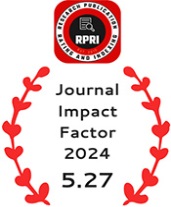Brand Advocacy Driven by Customer Satisfaction: A Qualitative Perspective
DOI:
https://doi.org/10.55544/ijrah.3.1.27Keywords:
Brand Advocacy, Customer Satisfaction, Indian Market, Word-of-Mouth Marketing, Customer Loyalty, Service Quality, Emotional Engagement, Digital AdvocacyAbstract
Brand advocacy is a powerful tool in modern marketing, driven primarily by high levels of customer satisfaction. This study examines how satisfied customers become brand advocates, influencing peer perceptions and boosting organizational success. Using qualitative methodologies, including interviews, focus groups, and case studies, the research focuses on the Indian market, where cultural factors such as collectivism and trust play critical roles. The study identifies key drivers of customer satisfaction that contribute to brand advocacy, such as service quality, emotional connection, and digital engagement. Insights from prominent Indian brands like Zomato, Tata, and Patanjali highlight the practical implications of fostering brand advocacy through customer satisfaction. Recommendations include strategies for businesses to harness this relationship to strengthen market positioning and customer loyalty.
Downloads
References
Kotler, P., & Keller, K. L. (2021). Marketing Management. Pearson Education.
Deloitte India. (2022). The Rise of Digital Advocacy in Indian Markets.
McKinsey & Company. (2021). Customer-Centric Growth Strategies.
Tata Group. (2021). Annual Ethical Branding Report.
Zomato. (2022). Building Customer Loyalty through Engagement.
Ministry of Consumer Affairs, India. (2021). Customer Satisfaction Index Report.
Downloads
Published
How to Cite
Issue
Section
License
Copyright (c) 2023 Dr. Kamalesh Kishore Shrivastava

This work is licensed under a Creative Commons Attribution-NonCommercial-NoDerivatives 4.0 International License.




















